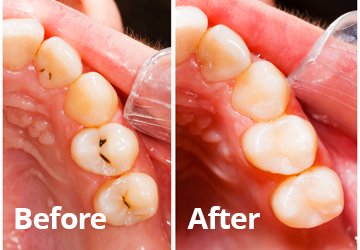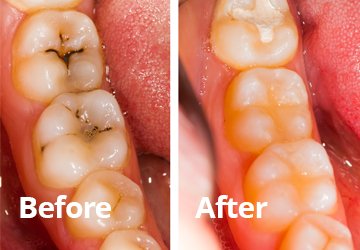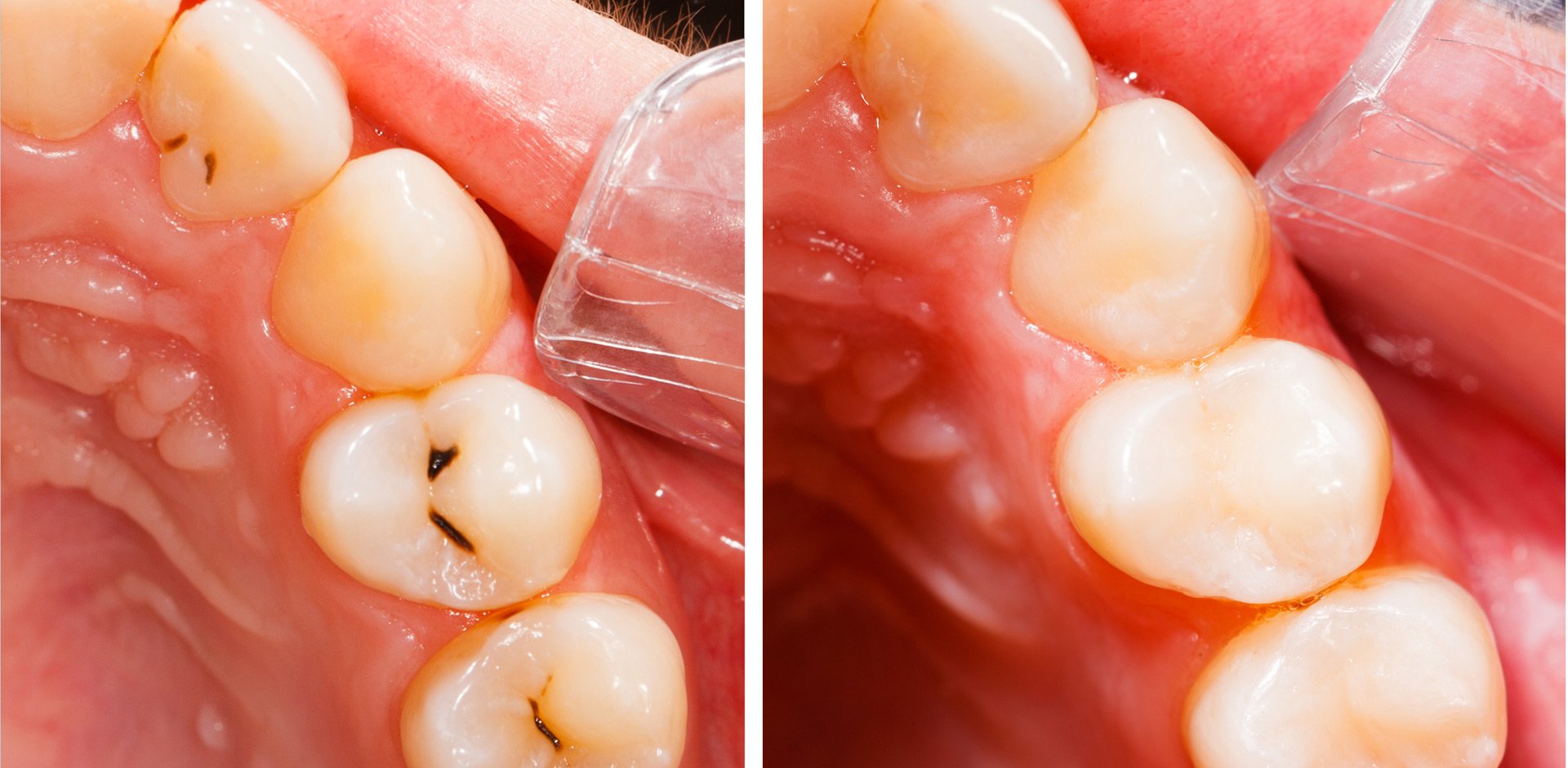What is Dental Filling?
A dental filling or dental restoration is used to restore the healthy shape, appearance, integrity and function of lost tooth structure.
It is a direct restoration that is placed in one visit procedure.
The tooth structure can be lost due to multiple reasons such as tooth decay, crack, chipping, wear, dental erosion and hereditary conditions.
In Cosmetic Dentistry, fillings may be used to close gaps in between teeth, mask discolouration or build up into desired teeth shape and alignment.
Procedure Involved
There are 2 main steps involved for dental filling procedure.
Tooth Preparation
After a proper dental examination, decayed and unsupported tooth structure needs to be removed.
Local anaesthesia is usually given before the procedure starts. This preparation step of the procedure gets rid of the remaining bacteria present in the cavity. This step also helps to form an ideal cavity shape for the filling material to be placed. Depending on the material of choice and technique, the cavity shape is designed accordingly.
Placement of Restorative Material
Once the tooth cavity is prepared and the cavity design is finalised, the dental restorative material of choice is placed into the prepared space to finalise the restoration.
The prepared cavity is thoroughly cleaned and conditioned on the tooth surface to prepare for the restorative material.
With an adhesive restoration, bonding agent is applied on the clean tooth surface to maximize the bonding strength between the material and tooth structure.
The material is then replaced & shaped and hardened. Once it is hardened, final shaping and polishing is done to fit into the neighbouring and opposing teeth to maximize the function.
Types of Dental Filling Materials
There are many different types of materials used in restorative dentistry.
And there are 3 main filling materials used for direct restorations.
At Prahran Family Dental, Resin Composite and GIC are mainly used for filling materials of choice for all our restorations.
Resin Composite
Resin composite, often called as “White Fillings,” is the most commonly used restorative material in general dentistry. Due to its natural tooth looking colour and ability to bond on a tooth structure, it is the most preferred material of choice in modern dentistry.
In Comestic Dentistry, this material is used to mask tooth discolouration, change teeth shape and alignment.
GIC
Glass Ionomer Cement (GIC) is also a tooth colour filling material that is commonly used in dentistry. This material is not as highly aesthetic as resin composite. It bonds onto a tooth surface and it releases fluoride that helps with decay prevention. Due to GIC’s property of being able to provide good insulation around nerve tissues, often it is placed on the base of deeper cavities.
Amalgam
Amalgam, often called as “silver filling,” is one of the dental materials that have been used in dentistry for a long time. Even though it is not a popular dental material of choice in modern dentistry due to its silver colour, it is a reliable and durable restorative material. It is strong and has a good sealing property. Due to its colour, it is mainly used to restore back teeth or root filled teeth now. In Cosmetic Dentistry, many people wish to get this type of filling replaced with white fillings.

































